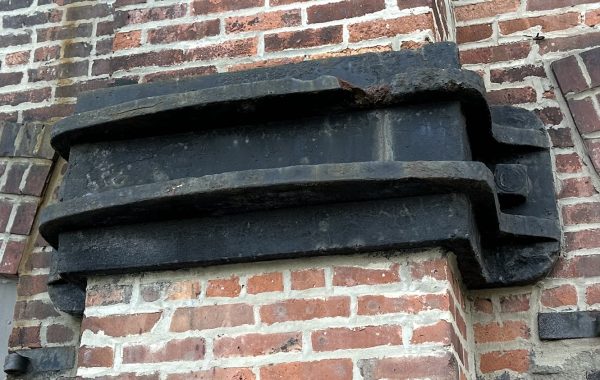Tension and compression members are both loaded axially and the formulas for determining stress and strain are identical. That doesn’t mean that designing them is the same. A tension member will fail in direct tension, by breaking or stretching so that it can no longer carry load. A short compression member is similar and will fail by crushing, but long compression members fail by buckling. The classic example used by engineering professors everywhere is a thin plastic ruler, which, when compressed at its ends, buckles and bends out of plane. In very rough terms, the length of a tension member doesn’t matter, while the length of a compression member does.
Pratt trusses follow this lead. The web members are arranged so that, under a uniform load along the length of the truss, the verticals are in compression and the diagonals (longer than the verticals) are in tension.
The picture above shows a roof supported on Howe trusses. (Note that Howe trusses are far less common than Pratt trusses.) They have the diagonals running the other way, in compression, and the shorter verticals are in tension. In the style of many nineteenth-century trusses, the compression members are in wood and the tension members are iron rods. Here’s a version of that picture with one truss highlighted red for compression and green for tension:

I know intellectually that Howe trusses can and have been safely designed, but they will never not look backwards to me.




You must be logged in to post a comment.